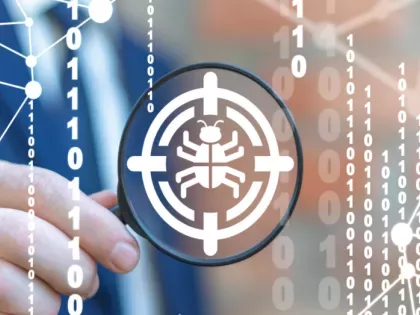Read about the latest cybersecurity news and get advice on third-party vendor risk management, reporting cybersecurity to the Board, managing cyber risks, benchmarking security performance, and more.
Insights blog.

Critical Vulnerabilities Discovered in Automated Tank Gauge Systems
Bitsight TRACE explores several critical vulnerabilities discovered in ATG systems and their inherent risk when exposed to the Internet.

If your organization is like many others, its cyber exposure continues to grow over time. During the pandemic, as attackers sought to exploit unprecedented changes in work environments, 35% of cyberattacks used previously unseen malware or methods, up from the norm of 20%. And with the average enterprise using well over 1,000 cloud services, it can be very difficult to get a handle on potential vulnerabilities or to know when risks will pop up.

A vulnerability scanner evaluates security weaknesses and gaps in your digital infrastructure. Learn what to look for in a robust solution.

What is a backdoor attack and how can you protect your organization from becoming a victim? Let’s explore this stealthy threat.

For obvious reasons, the financial services industry has had the unfortunate distinction of being one of the largest high value targets for threat actors. Research shows that financial services businesses experience 300 more cyber attacks than organizations in other industries. Many of those attacks come through third-party suppliers whose networks may not be as secure as the organizations they work with.

On July 26, 2023, the SEC voted to adopt new cybersecurity requirements for publicly traded companies, creating new obligations for reporting “material” cybersecurity incidents and requiring more detailed disclosure of cybersecurity risk management, expertise, and governance.

What is exposure management? Learn how you can assess your organization’s cyber risk exposure and get ahead of cyber risk.

The financial services sector is one of the highest performing in terms of cybersecurity. One factor that contributes to this performance is regulation.

Make your vendor lifecycle more efficient and less fraught with cyber risk with these three tips for supply chain risk management.

A security benchmark report is a document that helps an organization identify their cybersecurity capabilities and initiatives and compare those efforts to peers or competitors of the same sector or size. This snapshot is prepared either internally by the organization or by a third party.

CVE-2023-35036 & CVE-2023-35708 — were identified on June 9th and June 15th in the latest series of high-profile software supply chain vulnerabilities.

Not all cybersecurity analytics are useful. Some are built on data and methodology that is scientifically shown to be correlated with risks and incidents.

With high-profile breaches being traced back to supply chain vulnerabilities and a regulatory environment that’s waking up to the realities of vendor risk, many organizations are investing heavily in third-party risk management (TPRM) programs.

As cyber security threats proliferate, cyber risk conversations are no longer limited to the Security Operations Center (SOC); they command the attention of the C-suite and the boardroom.

Executive performance and cyber risk management are now inextricably linked. Learn how CISOs can help executives be more accountable for cyber risk.

Considering aggregate portfolio risk is critical for insurance companies—which means it’s important to differentiate between concentration risk and aggregation risk.